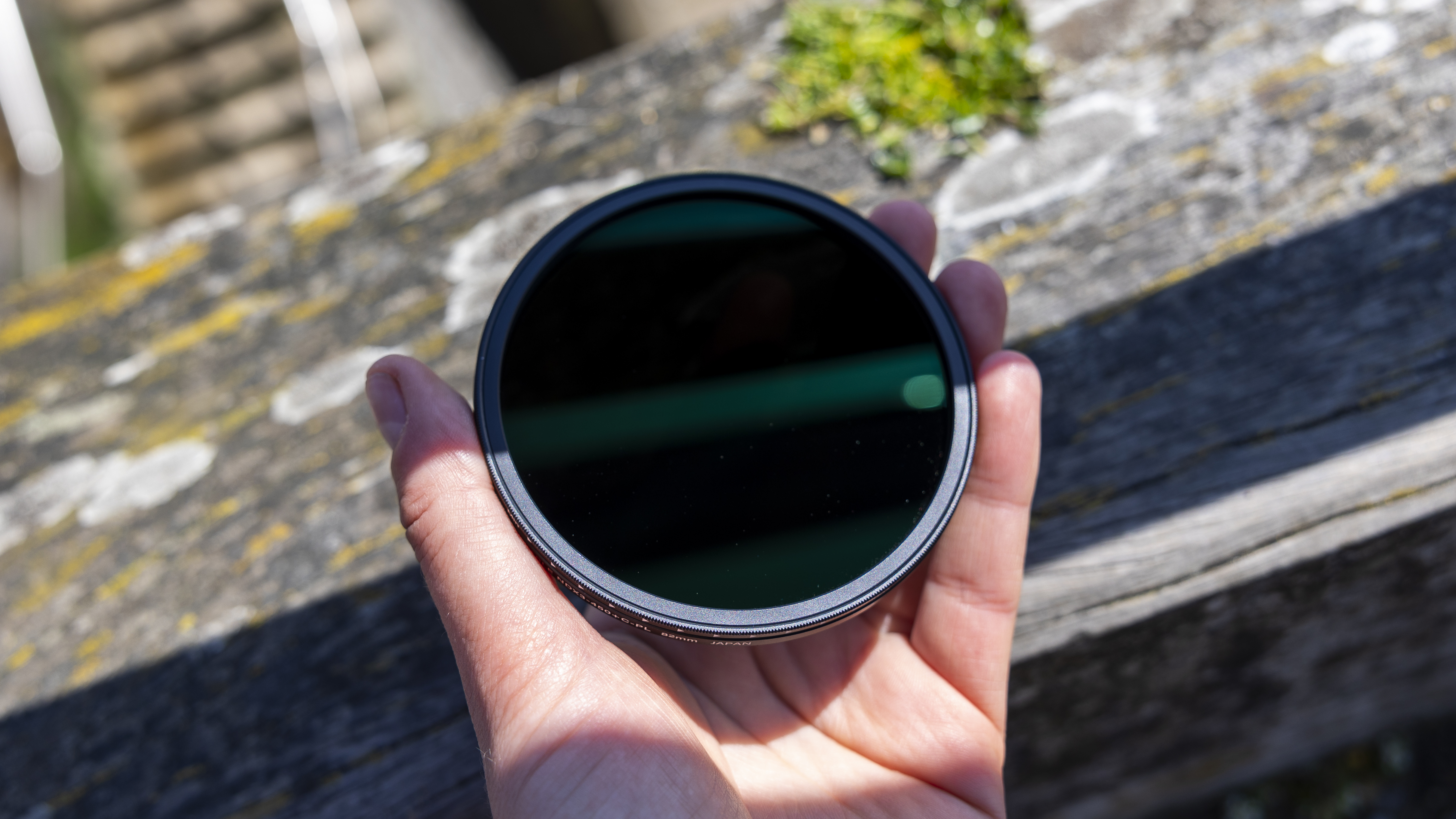
As an occasional landscape photographer, I like using filters for the odd blurry coastline but don't want to invest in professional-grade glass. As someone who's also made a point of cutting down their kit in recent years (I now use a 24-70mm lens for almost all my work), I don't want to carry multiple filters and holders around if I don't have to.
Many shooters share this niche – they're neither pros nor total hobbyists and have a desire to make exposure changes in-camera without spending a fortune. The Kenko Pro1D+ NDX3-450+C-PL filter then feels like the perfect option, which as the name suggests is a variable ND and circular polarizer in one.
It's part of Kenko's Instant Action range, which uses a magnetic adapter screwed onto your lens to allow the quick adding and removing of filters in the field. Having tested several Pro1D+ filters, I've been pleased with their performance. With the Kenko Pro1D+ CPL filter, I liked that it didn't affect image quality, while I found the Kenko Pro1D+ UV filter gave equally good clarity but was let down by a weak magnetic attraction.
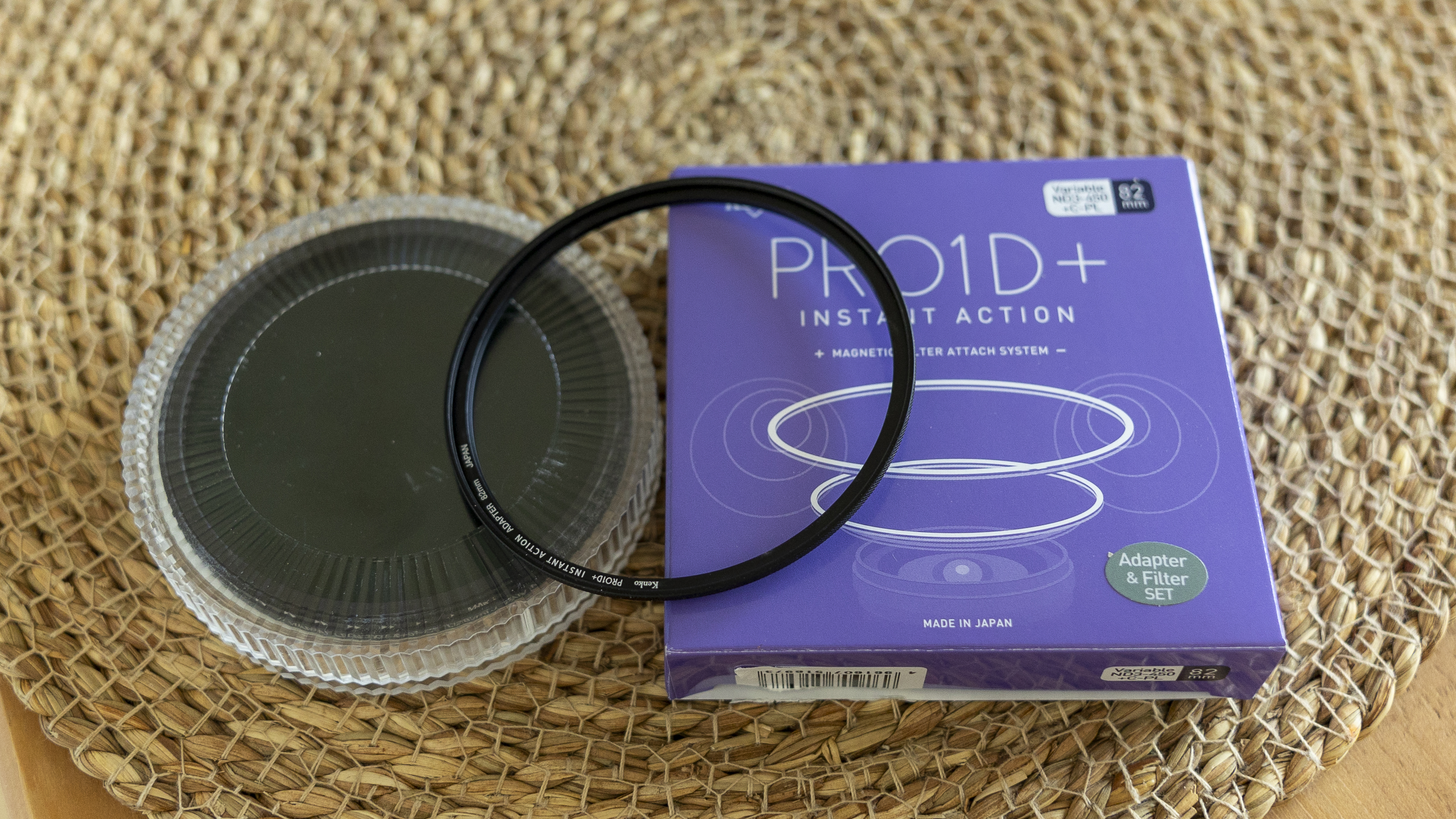
The NDX3-450+C-PL is the third on test, but will it be third time lucky? As much as I like saving weight in my kitbag, I'm always dubious when a photography accessory tries to do too much for fear that it'll do everything poorly. And given the size of filters, do we really save that much space or time by using a combined product?
On paper, the NDX3-450+C-PL neutral density filter (Kenko refers to it as a variable ND filter with polarizing functionality) is a very convenient way to maintain exposure control. You can vary the light entering the camera from 1.5 to 9 stops, which means being able to control motion blur or depth of field by choosing just the right shutter speed.
I've been testing the 82mm version (on and off) for several weeks on my Canon RF 24-70mm f/2.8L IS USM lens, and I've shared my honest thoughts below. Read on to discover whether the Kenko Pro1D+ NDX3-450+C-PL is the handy all-in-one filter the manufacturer promises and whether it beats buying the best variable ND filters and best polarizers separately.
Kenko Pro1D+ NDX3-450+C-PL filter: Specification
Kenko Pro1D+ NDX3-450+C-PL filter: Price
Kenko's Pro1D+ filter lineup isn't premium in price, but it's not at the value end of the scale either. It's sensibly priced, boring even, and the Kenko PRO1D+ Instant Action Variable NDX3-450+C-PL is available as a solo package (filter only) or as a set (with a magnetic adapter). It's nice to have the solo option, as it brings down the cost if you already have an adapter from buying another filter in the range.
Like other Pro1D+ filters, there are few real "features" to warrant a high price anyway, and Kenko doesn't mention there being any water-repellent or anti-stain coatings as you get on the UV version. It also doesn't state what glass is used for the filter, so you wouldn't expect to pay for the German-made SCHOTT glass on Urth's Magnetic CPL Polarizing Filter Plus+ range.
Availability of the NDX3-450+C-PL is patchy, but where sold it comes out about the same price as buying the Kenko Pro1D+ CPL filter and an average variable ND separately. Overall I'd say it was good value, but I'm disappointed in the build quality of the plastic filter container whereas other brands give you a premium metal tin to store your glass safely in.
Kenko Pro1D+ NDX3-450+C-PL filter: Design & Handling
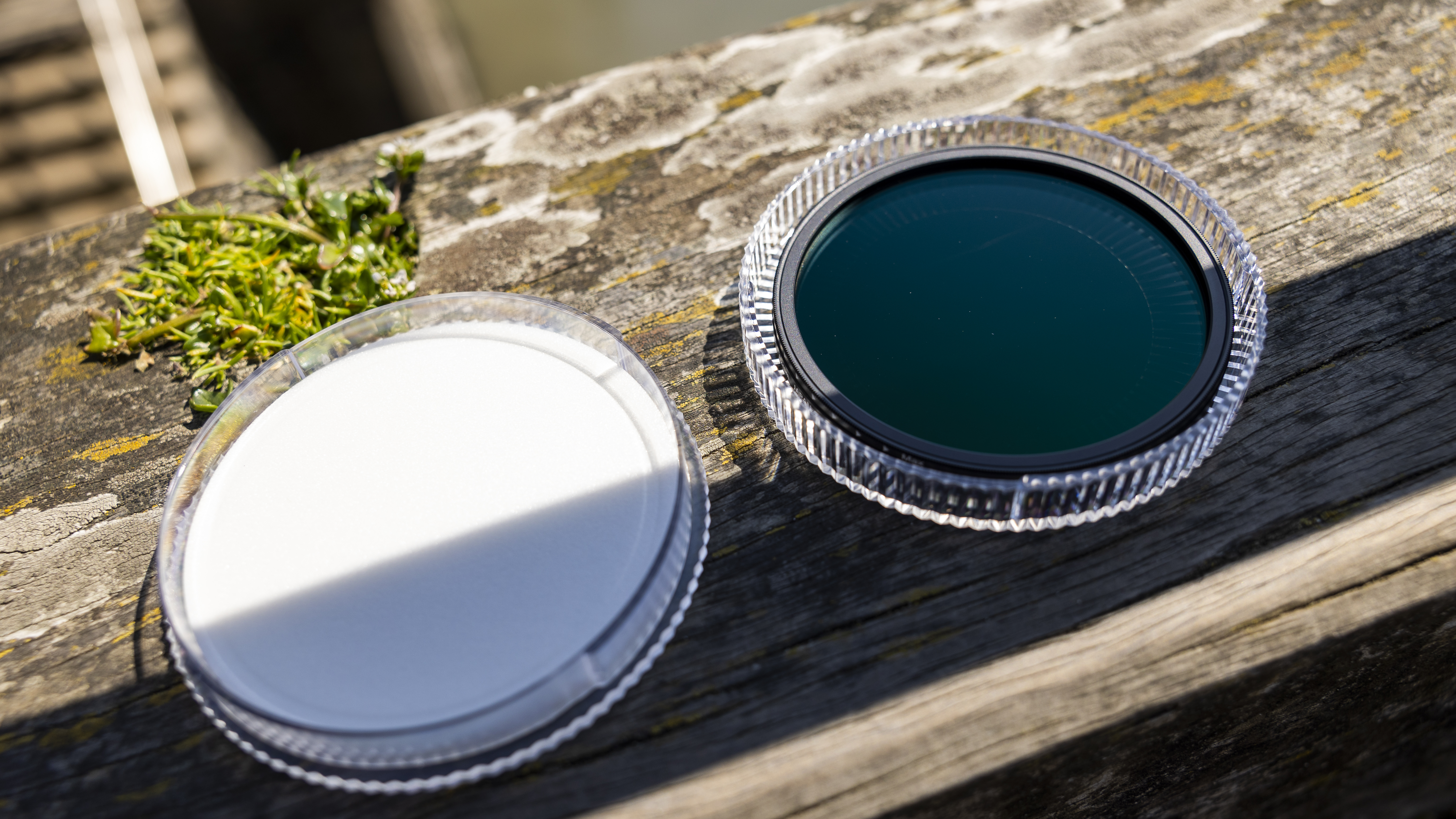
Like other PRO1D+ Instant Action filters, the NDX3-450+C-PL comes in a cardboard box with a bold hue – this time violet. Inside, the filter is kept in a round plastic case with a foam base for protection, which screws shut to prevent it from opening during storage but feels too brittle to last long out in the wilderness. You get a packaged magnetic filter of the same thread size (unless you've bought the solo version).
There are simple line diagrams on the back of the box to illustrate that you need to screw on the magnetic adapter ring to your lens first and attach the filter on top. It took twenty seconds at most to follow these steps with my Canon RF 24-70mm f/2.8L IS USM lens, and the filter gripped firmly to the front thanks to a strong magnetic pull. It also didn't rattle around in the holder as I rotated the filter threads.

In terms of handling, I wasn't initially sure how to use the filter and control both the ND and polarizer elements. I didn't even notice the tiny metal "knobs" inside the box until I'd had a Google, visited the Kenko website and found a how-to method. Essentially, screwing two gold-colored metal poles onto machined holes on the inner ring it makes it much easier to rotate it.
The filter is noticeably thicker than Kenko's UV filter or C-PL filter; because there are two rotating threads you need room to rotate both portions separately. This build isn’t a problem in itself, but it doesn't allow you to mount a lens cap on top.

The idea is that you set the density first by rotating the thinner outer ring. There are printed arrow markings between Min and Max to guide you, but I'm still unsure where you're meant to line them up to achieve said densities. Next – and you must set the ND first, C-PL second – you control the polarization effect by rotating the bigger outer frame using the knobs.
The problem I found with this is that it often ended up just rotating the whole frame, and I'd have to try and hold the ND thread in place while setting the polarizer. Not always easy when you're also looking through the viewfinder or on the screen to check settings.

Kenko Pro1D+ NDX3-450+C-PL filter: Performance
I'll be honest; when I started using the Kenko Pro1D+ NDX3-450+C-PL to smooth water on a bright, sunny day I was worried and disappointed by the results. But that's because I hadn't read up on how to use the filter, or thought I needed to. At first, I was rotating the inner and outer rings with abandon, using the camera's LCD screen to check the effect on exposure.
It wasn't easy to tell whether the polarizer was having an effect on reflections or how strong the ND filter was. In several images, there was a complete cast over the frame that looked like the edge of a filter, while in others there was a strong color cast at the edges. Frustrated, I did some more research and discovered that there was a method for using this filter. Kenko explains that "due to the specific construction of the filter, the polarization effect changes when adjusting the density" and that you need to adjust the density first and the polarization second.
Doing this required me to approach each scene more thoughtfully, and think about my intentions for it. Not necessarily a bad thing. I've already shared my misgivings about the design, but it didn't take too long to get the hang of using both filters independently. Image quality was also better when I wasn't pushing the density ring past its maximum.
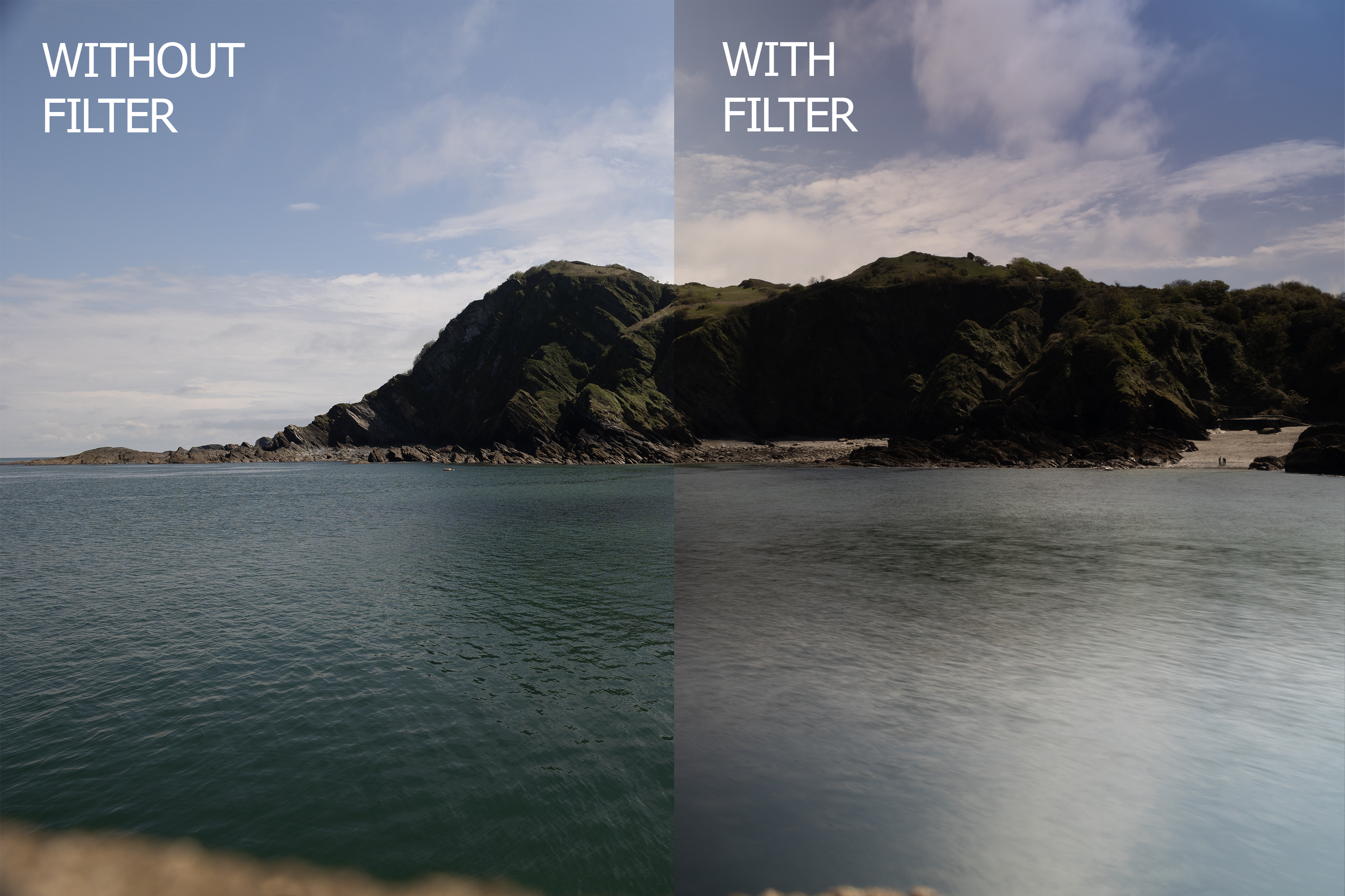
I have few complaints about the filter's effect on image sharpness, but I did notice some serious vignetting at the higher ND strengths – despite Kenko's claims that with this product you'll "forget about vignetting caused by stacking several ND filters." Optically, wide-angle lenses are more prone to vignetting at the edges of images anyway, but the effect was pronounced from 24mm.
Overall, the Kenko Pro1D+ NDX3-450+C-PL images required heavier processing than I'd usually do to boost the shadows and saturation in these areas. I made sure to test the filter on a very bright, sunny day, and the polarizer element was able to boost the blue skies. It also allowed me to set far wider apertures without the risk of overexposing the frame. This gave me more creative shooting options when I didn't want to set a narrower aperture with my ISO already as low as possible.

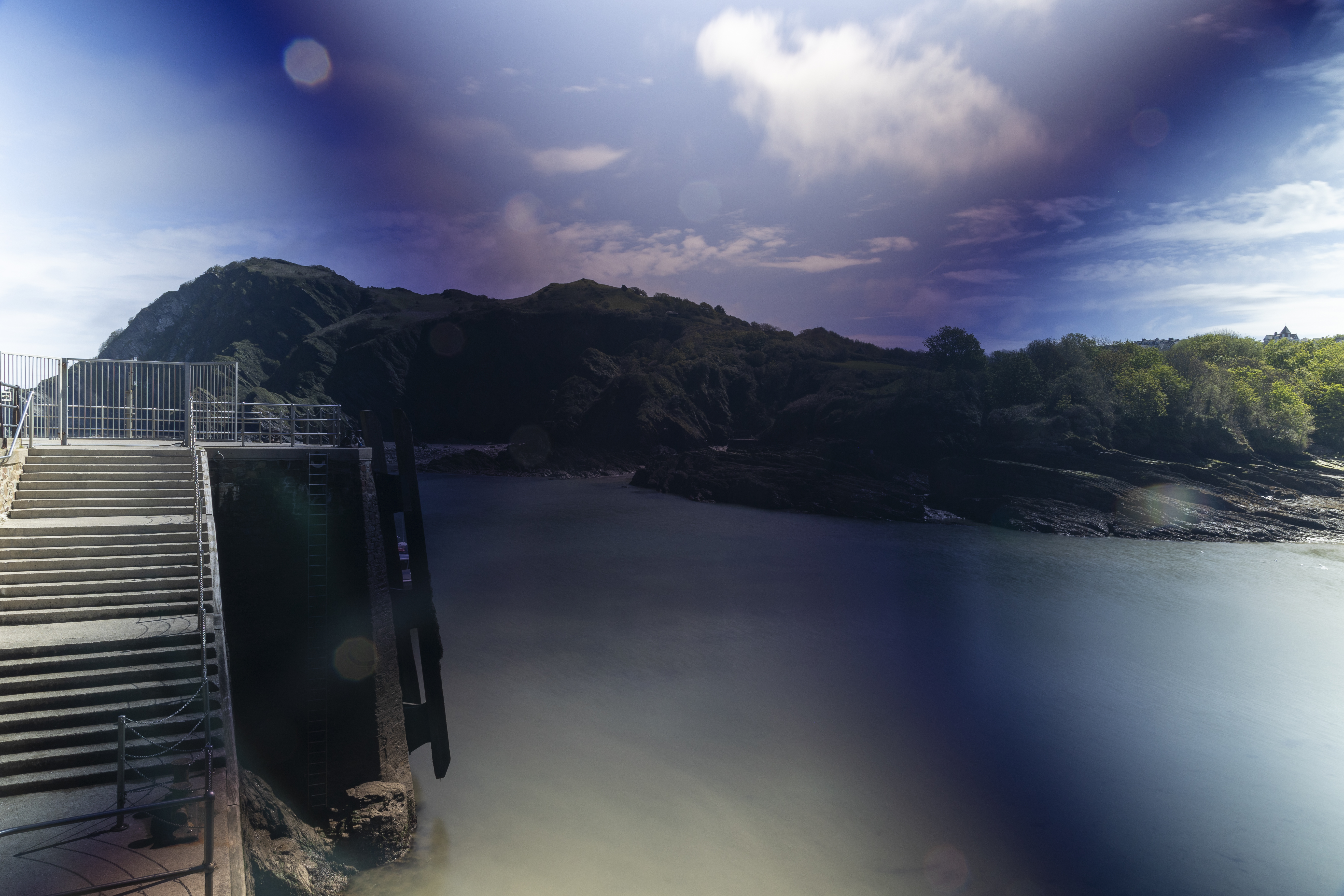
Kenko Pro1D+ NDX3-450+C-PL filter: Verdict
Overall, I think this filter is a good buy for enthusiast landscape photographers who are just starting to experiment with long exposures and don't want to buy several different products. It’d make a good first filter, especially as you get the magnetic adapter in the box for extra value and an easy setup.
Although using a variable ND filter should be fairly self-explanatory, I’d like Kenko to provide better instructions for the Pro1D+ NDX3-450+C-PL. Even as an experienced photographer, it wasn't always obvious how best to use the two filters together but Kenko does advise that you adjust the density first and the polarization afterward.
If you’re looking for a good value ND and polarizing filter in one, and don’t mind a bit of image editing when you get home, this Kenko Pro1D+ will be just what you need to extend your shutter times and boost your skies. They say practice makes perfect, and that's the case here. Expect a bit of faff with the turning mechanism and a learning curve to get results that aren't too dark or too muddy, but you'll soon be shooting an array of scenes with just one accessory.
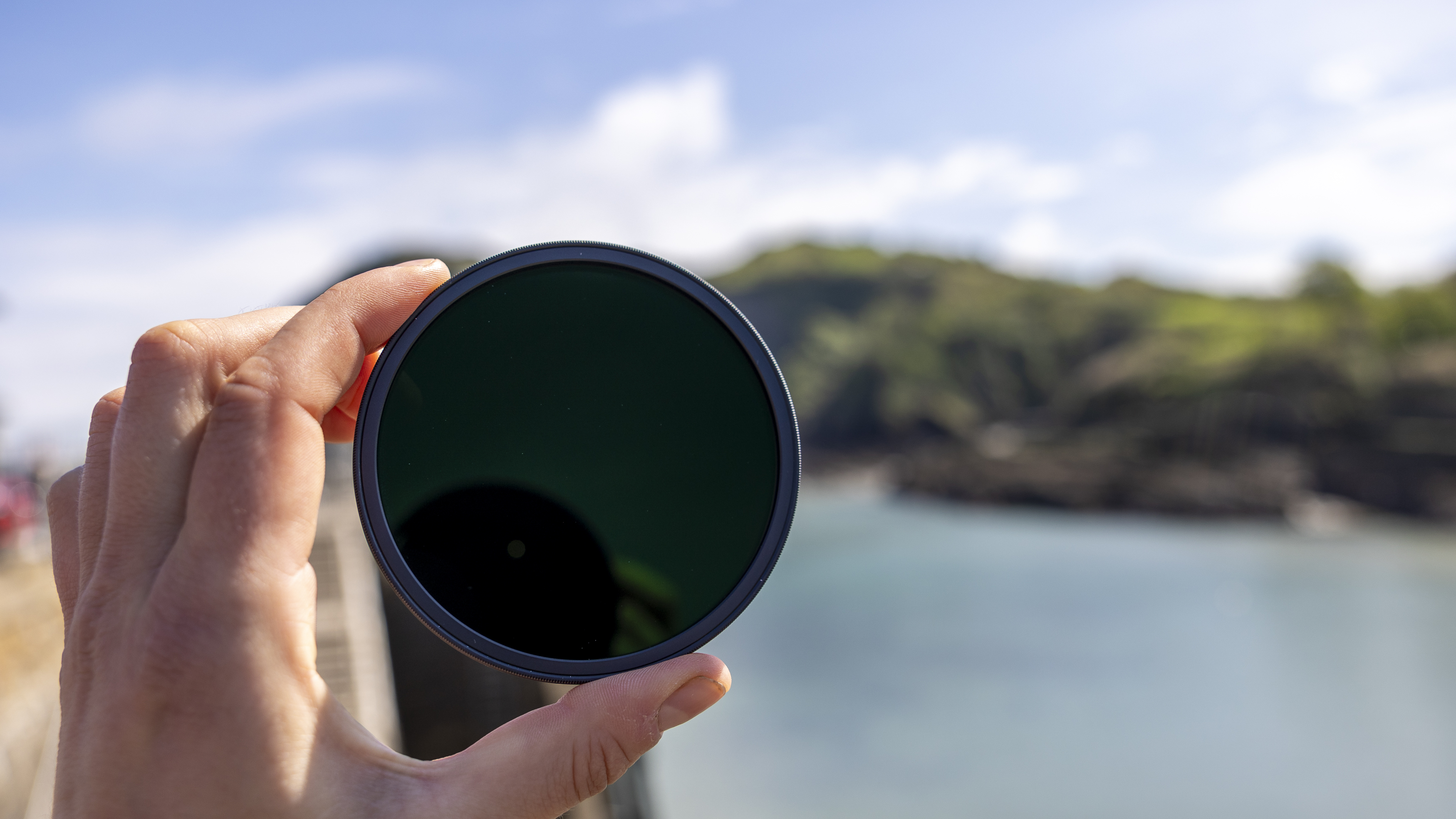
✅ Buy this if...
- You want a variable ND for different applications rather than one strength.
- You have other filters in the Pro1D+ magnetic range.
🚫 Don't buy this if...
- You use slide-in filters and don't want to invest in another system.
- You're able to spend a bit more on premium glass.







